SNLS250E May 2008 – April 2015 DP83848H , DP83848J , DP83848K , DP83848M , DP83848T
PRODUCTION DATA.
- 1Device Overview
- 2Revision History
- 3 Device Comparison
- 4Pin Configuration and Functions
- 5Specifications
-
6Detailed Description
- 6.1 Overview
- 6.2 Functional Block Diagram
- 6.3 Feature Description
- 6.4 Device Functional Modes
- 6.5
Programming
- 6.5.1
Architecture
- 6.5.1.1 100BASE-TX Transmitter
- 6.5.1.2
100BASE-TX Receiver
- 6.5.1.2.1 Analog Front End
- 6.5.1.2.2 Digital Signal Processor
- 6.5.1.2.3 Digital Adaptive Equalization and Gain Control
- 6.5.1.2.4 Base Line Wander Compensation
- 6.5.1.2.5 Signal Detect
- 6.5.1.2.6 MLT-3 to NRZI Decoder
- 6.5.1.2.7 NRZI to NRZ
- 6.5.1.2.8 Serial to Parallel
- 6.5.1.2.9 Descrambler
- 6.5.1.2.10 Code-Group Alignment
- 6.5.1.2.11 4B/5B Decoder
- 6.5.1.2.12 100BASE-TX Link Integrity Monitor
- 6.5.1.2.13 Bad SSD Detection
- 6.5.1.3
10BASE-T Transceiver Module
- 6.5.1.3.1 Operational Modes
- 6.5.1.3.2 Smart Squelch
- 6.5.1.3.3 Collision Detection and SQE
- 6.5.1.3.4 Carrier Sense
- 6.5.1.3.5 Normal Link Pulse Detection/Generation
- 6.5.1.3.6 Jabber Function
- 6.5.1.3.7 Automatic Link Polarity Detection and Correction
- 6.5.1.3.8 Transmit and Receive Filtering
- 6.5.1.3.9 Transmitter
- 6.5.1.3.10 Receiver
- 6.5.1
Architecture
- 6.6
Memory
- 6.6.1
Register Block
- 6.6.1.1
Register Definition
- 6.6.1.1.1 Basic Mode Control Register (BMCR)
- 6.6.1.1.2 Basic Mode Status Register (BMSR)
- 6.6.1.1.3 PHY Identifier Register #1 (PHYIDR1)
- 6.6.1.1.4 PHY Identifier Register #2 (PHYIDR2)
- 6.6.1.1.5 Auto-Negotiation Advertisement Register (ANAR)
- 6.6.1.1.6 Auto-Negotiation Link Partner Ability Register (ANLPAR) (BASE Page)
- 6.6.1.1.7 Auto-Negotiation Link Partner Ability Register (ANLPAR) (Next Page)
- 6.6.1.1.8 Auto-Negotiate Expansion Register (ANER)
- 6.6.1.1.9 Auto-Negotiation Next Page Transmit Register (ANNPTR)
- 6.6.1.2
Extended Registers
- 6.6.1.2.1 PHY Status Register (PHYSTS)
- 6.6.1.2.2 False Carrier Sense Counter Register (FCSCR)
- 6.6.1.2.3 Receiver Error Counter Register (RECR)
- 6.6.1.2.4 100 Mb/s PCS Configuration and Status Register (PCSR)
- 6.6.1.2.5 RMII and Bypass Register (RBR)
- 6.6.1.2.6 LED Direct Control Register (LEDCR)
- 6.6.1.2.7 PHY Control Register (PHYCR)
- 6.6.1.2.8 10BASE-T Status/Control Register (10BTSCR)
- 6.6.1.2.9 CD Test and BIST Extensions Register (CDCTRL1)
- 6.6.1.2.10 Energy Detect Control (EDCR)
- 6.6.1.1
Register Definition
- 6.6.1
Register Block
- 7Application, Implementation, and Layout
- 8Device and Documentation Support
- 9Mechanical Packaging and Orderable Information
5 Specifications
5.1 Absolute Maximum Ratings
over operating free-air temperature range (unless otherwise noted) (1)(2)| MIN | MAX | UNIT | ||
|---|---|---|---|---|
| VCC | Supply voltage | –0.5 | 4.2 | V |
| VIN | DC input voltage | –0.5 | VCC + 0.5 | V |
| VOUT | DC output voltage | –0.5 | VCC + 0.5 | V |
| Max case temperature | 147.7 | °C | ||
| TJ | Max die temperature | 150 | °C | |
| Tstg | Storage temperature | –65 | 150 | °C |
(1) Stresses beyond those listed under Absolute Maximum Ratings may cause permanent damage to the device. These are stress ratings only, which do not imply functional operation of the device at these or any other conditions beyond those indicated under Recommended Operating Conditions. Exposure to absolute-maximum-rated conditions for extended periods may affect device reliability.
(2) All parameters are specified by test, statistical analysis or design.
5.2 ESD Ratings
| VALUE | UNIT | |||
|---|---|---|---|---|
| V(ESD) | Electrostatic discharge | Human body model (HBM), per ANSI/ESDA/JEDEC JS-001(1)(3) | ±4000 | V |
| Charged device model (CDM), per JEDEC specification JESD22-C101(2) | ±1000 | |||
(1) JEDEC document JEP155 states that 500-V HBM allows safe manufacturing with a standard ESD control process.
(2) JEDEC document JEP157 states that 250-V CDM allows safe manufacturing with a standard ESD control process.
(3) RZAP = 1.5 kΩ, CZAP = 120 pF
5.3 Recommended Operating Conditions
over operating free-air temperature range (unless otherwise noted)| MIN | NOM | MAX | UNIT | |||
|---|---|---|---|---|---|---|
| VCC | Supply voltage | 3.3 | ±0.3 | V | ||
| TA | Ambient temperature | Commerical - DP83848J/M | 0 | 70 | °C | |
| Industrial - DP83848K/T | –40 | 85 | ||||
| Extreme - DP83848H | –40 | 125 | ||||
| PD | Power dissipation | 264 | mW | |||
5.4 Thermal Information
| THERMAL METRIC(1) | DP83848x | UNIT | |
|---|---|---|---|
| RTA [WQFN] | |||
| 40 PINS | |||
| RθJA | Junction-to-ambient thermal resistance | 31.7 | °C/W |
| RθJC(top) | Junction-to-case (top) thermal resistance | 8.8 | |
| RθJB | Junction-to-board thermal resistance | 40.5 | |
| ψJT | Junction-to-top characterization parameter | 0.4 | |
| ψJB | Junction-to-board characterization parameter | 10.5 | |
| RθJC(bot) | Junction-to-case (bottom) thermal resistance | 5.5 | |
(1) For more information about traditional and new thermal metrics, see the IC Package Thermal Metrics application report, SPRA953.
5.5 DC Specifications
over operating free-air temperature range (unless otherwise noted)| PARAMETER | TEST CONDITIONS | PIN TYPES | MIN | TYP | MAX | UNIT | |
|---|---|---|---|---|---|---|---|
| VIH | Input high voltage | Nominal VCC | I I/O | 2 | V | ||
| VIL | Input low voltage | I I/O | 0.8 | V | |||
| IIH | Input high current | VIN = VCC | I I/O | 10 | µA | ||
| IIL | Input low current | VIN = GND | I I/O | 10 | µA | ||
| VOL | Output low voltage | IOL = 4 mA | O, I/O | 0.4 | V | ||
| VOH | Output high voltage | IOH = –4 mA | O, I/O | Vcc – 0.5 | V | ||
| VledOL | Output low voltage | IOL = 2.5 mA | LED | 0.4 | V | ||
| VledOH | Output high voltage | IOH = –2.5 mA | LED | Vcc – 0.5 | V | ||
| IOZ | Tri-state leakage | VOUT = VCC | I/O, O | ±10 | µA | ||
| VTPTD_100 | 100M Transmit voltage | PMD Output | 0.95 | 1 | 1.05 | V | |
| VTPTDsym | 100M Transmit voltage symmetry | PMD Output Pair | ±2% | ||||
| VTPTD_10 | 10M Transmit voltage | PMD Output Pair | 2.2 | 2.5 | 2.8 | V | |
| CIN1 | CMOS Input capacitance | I | 5 | pF | |||
| COUT1 | CMOS Output capacitance | O | 5 | pF | |||
| SDTHon | 100BASE-TX Signal detect turnon threshold | PMD Input Pair | 1000 | mV diff pk-pk | |||
| SDTHoff | 100BASE-TX Signal detect turnoff threshold | PMD Input Pair | 200 | mV diff pk-pk | |||
| VTH1 | 10BASE-T Receive Threshold | PMD Input Pair | 585 | mV | |||
| Idd100 | 100BASE-TX (Full Duplex) | IOUT = 0 mA(1) | PMD Input Pair | 81 | mA | ||
| Idd10 | 10BASE-T (Full Duplex) | Supply | 92 | ||||
(1) Refer to application note SNLA089, “Power Measurement of Ethernet Physical Layer Products”
5.6 AC Timing Requirements
| MIN | NOM | MAX | UNIT | |||
|---|---|---|---|---|---|---|
| POWER UP TIMING (REFER TO Figure 5-1)(1) | ||||||
| T2.1.1 | Post Power Up Stabilization time prior to MDC preamble for register accesses | MDIO is pulled high for 32-bit serial management initialization. X1 Clock must be stable for a minimum of 167 ms at power up. |
167 | ms | ||
| T2.1.2 | Hardware Configuration Latch-in Time from power up | Hardware Configuration Pins are described in Section 4. X1 Clock must be stable for a minimum of 167 ms at power up. |
167 | ms | ||
| T2.1.3 | Hardware Configuration pins transition to output drivers | 50 | ns | |||
| RESET TIMING (REFER TO Figure 5-2)(2) | ||||||
| T2.2.1 | Post RESET Stabilization time prior to MDC preamble for register accesses | MDIO is pulled high for 32-bit serial management initialization. | 3 | µs | ||
| T2.2.2 | Hardware Configuration Latch-in Time from the Deassertion of RESET (either soft or hard) | Hardware Configuration Pins are described in Section 4. | 3 | µs | ||
| T2.2.3 | Hardware Configuration pins transition to output drivers | 50 | ns | |||
| T2.2.4 | RESET pulse width | X1 Clock must be stable for at minimum of 1 µs during RESET pulse low time. | 1 | µs | ||
| MII SERIAL MANAGEMENT TIMING (REFER TO Figure 5-3) | ||||||
| T2.3.1 | MDC to MDIO (Output) Delay Time | 0 | 30 | ns | ||
| T2.3.2 | MDIO (Input) to MDC Setup Time | 10 | ns | |||
| T2.3.3 | MDIO (Input) to MDC Hold Time | 10 | ns | |||
| T2.3.4 | MDC Frequency | 2.5 | 25 | MHz | ||
| 100 Mb/s MII TRANSMIT TIMING (REFER TO Figure 5-4) | ||||||
| T2.4.1 | TX_CLK High/Low Time | 100 Mb/s Normal mode | 16 | 20 | 24 | ns |
| T2.4.2 | TXD[3:0], TX_EN Data Setup to TX_CLK | 100 Mb/s Normal mode | 10 | ns | ||
| T2.4.3 | TXD[3:0], TX_EN Data Hold from TX_CLK | 100 Mb/s Normal mode | 0 | ns | ||
| 100 Mb/s MII RECEIVE TIMING (REFER TO Figure 5-5)(3) | ||||||
| T2.5.1 | RX_CLK High/Low Time | 100 Mb/s Normal mode | 16 | 20 | 24 | ns |
| T2.5.2 | RX_CLK to RXD[3:0], RX_DV, RX_ER Delay | 100 Mb/s Normal mode | 10 | 30 | ns | |
| 100BASE-TX TRANSMIT PACKET LATENCY TIMING (REFER TO Figure 5-6)(4) | ||||||
| T2.6.1 | TX_CLK to PMD Output Pair Latency | 100 Mb/s Normal mode | 6 | bits | ||
| 100BASE-TX TRANSMIT PACKET DEASSERTION TIMING (REFER TO Figure 5-7)(5) | ||||||
| T2.7.1 | TX_CLK to PMD Output Pair Deassertion | 100 Mb/s Normal mode | 6 | bits | ||
| 100BASE-TX TRANSMIT TIMING (tR/F) AND JITTER) (REFER TO Figure 5-8)(6)(7) | ||||||
| T2.8.1 | 100 Mb/s PMD Output Pair tR and tF | 3 | 4 | 5 | ns | |
| 100 Mb/s tR and tF Mismatch | 500 | ps | ||||
| T2.8.2 | 100 Mb/s PMD Output Pair Transmit Jitter | 1.4 | ns | |||
| 100BASE-TX RECEIVE PACKET LATENCY TIMING (REFER TO Figure 5-9)(8)(9)(10) | ||||||
| T2.9.1 | Carrier Sense ON Delay | 100 Mb/s Normal mode | 20 | bits | ||
| T2.9.2 | Receive Data Latency | 100 Mb/s Normal mode | 24 | bits | ||
| 100BASE-TX RECEIVE PACKET DEASSERTION TIMING (REFER TO Figure 5-10)(9)(11) | ||||||
| T2.10.1 | Carrier Sense OFF Delay | 100 Mb/s Normal mode | 24 | bits | ||
| 10 Mb/s MII TRANSMIT TIMING (REFER TO Figure 5-11)(12) | ||||||
| T2.11.1 | TX_CLK High/Low Time | 10 Mb/s MII mode | 190 | 200 | 210 | ns |
| T2.11.2 | TXD[3:0], TX_EN Data Setup to TX_CLK fall | 10 Mb/s MII mode | 25 | ns | ||
| T2.11.3 | TXD[3:0], TX_EN Data Hold from TX_CLK rise | 10 Mb/s MII mode | 0 | ns | ||
| 10 Mb/s MII RECEIVE TIMING (REFER TOFigure 5-12)(13) | ||||||
| T2.12.1 | RX_CLK High/Low Time | 160 | 200 | 240 | ns | |
| T2.12.2 | RX_CLK to RXD[3:0], RX_DV Delay | 10 Mb/s MII mode | 100 | ns | ||
| T2.12.3 | RX_CLK rising edge delay from RXD[3:0], RX_DV Valid | 10 Mb/s MII mode | 100 | ns | ||
| 10BASE-T TRANSMIT TIMING (START OF PACKET) (REFER TO Figure 5-13)(14) | ||||||
| T2.13.1 | Transmit Output Delay from the Falling Edge of TX_CLK | 10 Mb/s MII mode | 3.5 | bits | ||
| 10BASE-T TRANSMIT TIMING (END OF PACKET) (REFER TO Figure 5-14) | ||||||
| T2.14.1 | End of Packet High Time (with 0 ending bit) | 250 | 300 | ns | ||
| T2.14.2 | End of Packet High Time (with 1 ending bit) | 250 | 300 | ns | ||
| 10BASE-T RECEIVE TIMING (START OF PACKET) (REFER TO Figure 5-15)(14)(15) | ||||||
| T2.15.1 | Carrier Sense Turnon Delay (PMD Input Pair to CRS) | 630 | 1000 | ns | ||
| T2.15.2 | RX_DV Latency | 10 | bits | |||
| T2.15.3 | Receive Data Latency | Measurement shown from SFD | 8 | bits | ||
| 10BASE-T RECEIVE TIMING (END OF PACKET) (REFER TO Figure 5-16) | ||||||
| T2.16.1 | Carrier Sense Turn Off Delay | 1 | µs | |||
| 10Mb/s HEARTBEAT TIMING (REFER TO Figure 5-17) | ||||||
| T2.17.1 | CD Heartbeat Delay | All 10 Mb/s modes | 1200 | ns | ||
| T2.17.2 | CD Heartbeat Duration | All 10 Mb/s modes | 1000 | ns | ||
| 10 Mb/s JABBER TIMING (REFER TO Figure 5-18) | ||||||
| T2.18.1 | Jabber Activation Time | 85 | ms | |||
| T2.18.2 | Jabber Deactivation Time | 500 | ms | |||
| 10BASE-T NORMAL LINK PULSE TIMING (REFER TO Figure 5-19)(16) | ||||||
| T2.19.1 | Pulse Width | 100 | ns | |||
| T2.19.2 | Pulse Period | 16 | ms | |||
| AUTO-NEGOTIATION FAST LINK PULSE (FLP) TIMING (REFER TO Figure 5-20)(16) | ||||||
| T2.20.1 | Clock, Data Pulse Width | 100 | ns | |||
| T2.20.2 | Clock Pulse to Clock Pulse Period | 125 | µs | |||
| T2.20.3 | Clock Pulse to Data Pulse Period | Data = 1 | 62 | µs | ||
| T2.20.4 | Burst Width | 2 | ms | |||
| T2.20.5 | FLP Burst to FLP Burst Period | 16 | ms | |||
| 100BASE-TX SIGNAL DETECT TIMING (REFER TO Figure 5-22)(17) | ||||||
| T2.21.1 | SD Internal Turnon Time | 1 | ms | |||
| T2.21.2 | SD Internal Turnoff Time | 350 | µs | |||
| 100 Mb/s INTERNAL LOOPBACK TIMING (REFER TO Figure 5-22)(18)(19) | ||||||
| T2.22.1 | TX_EN to RX_DV Loopback | 100 Mb/s internal loopback mode | 240 | ns | ||
| 10 Mb/s INTERNAL LOOPBACK TIMING (REFER TO Figure 5-23)(19) | ||||||
| T2.23.1 | TX_EN to RX_DV Loopback | 10 Mb/s internal loopback mode | 2 | µs | ||
| RMII TRANSMIT TIMING (REFER TO Figure 5-24) | ||||||
| T2.24.1 | X1 Clock Period | 50-MHz Reference Clock | 20 | ns | ||
| T2.24.2 | TXD[1:0], TX_EN, Data Setup to X1 rising | 4 | ns | |||
| T2.24.3 | TXD[1:0], TX_EN, Data Hold from X1 rising | 2 | ns | |||
| T2.24.4 | X1 Clock to PMD Output Pair Latency | From X1 Rising edge to first bit of symbol | 17 | bits | ||
| RMII RECEIVE TIMING (REFER TO Figure 5-25)(20)(21)(22)(23)(24)(25) | ||||||
| T2.25.1 | X1 Clock Period | 50-MHz Reference Clock | 20 | ns | ||
| T2.25.2 | RXD[1:0], CRS_DV, RX_DV, and RX_ER output delay from X1 rising | 2 | 14 | ns | ||
| T2.25.3 | CRS ON delay | From JK symbol on PMD Receive Pair to initial assertion of CRS_DV | 18.5 | bits | ||
| T2.25.4 | CRS OFF delay | From TR symbol on PMD Receive Pair to initial deassertion of CRS_DV | 27 | bits | ||
| T2.25.5 | RXD[1:0] and RX_ER latency | From symbol on Receive Pair. Elasticity buffer set to default value (01) | 38 | bits | ||
| ISOLATION TIMING (REFER TO Figure 5-26) | ||||||
| T2.26.1 | From software clear of bit 10 in the BMCR register to the transition from Isolate to Normal Mode | 100 | µs | |||
| T2.26.2 | From Deassertion of S/W or H/W Reset to transition from Isolate to Normal mode | 500 | µs | |||
| 100 Mb/s X1 TO TX_CLK TIMING (REFER TO Figure 5-27)(26) | ||||||
| T2.27.1 | X1 to TX_CLK delay | 100 Mb/s Normal mode | 0 | 5 | ns | |
(1) In RMII Mode, the minimum Post Power up Stabilization and Hardware Configuration Latch-in times are 84 ms.
(2) It is important to choose pullup and/or pulldown resistors for each of the hardware configuration pins that provide fast RC time constants in order to latch-in the proper value prior to the pin transitioning to an output driver.
(3) RX_CLK may be held low or high for a longer period of time during transition between reference and recovered clocks. Minimum high and low times will not be violated.
(4) For Normal mode, latency is determined by measuring the time from the first rising edge of TX_CLK occurring after the assertion of TX_EN to the first bit of the “J” code group as output from the PMD Output Pair. 1 bit time = 10 ns in 100 Mb/s mode.
(5) Deassertion is determined by measuring the time from the first rising edge of TX_CLK occurring after the deassertion of TX_EN to the first bit of the “T” code group as output from the PMD Output Pair. 1 bit time = 10 ns in 100 Mb/s mode.
(6) Normal Mismatch is the difference between the maximum and minimum of all rise and fall times.
(7) Rise and fall times taken at 10% and 90% of the +1 or –1 amplitude.
(8) Carrier Sense On Delay is determined by measuring the time from the first bit of the “J” code group to the assertion of Carrier Sense.
(9) 1 bit time = 10 ns in 100 Mb/s mode.
(10) PMD Input Pair voltage amplitude is greater than the Signal Detect Turnon Threshold Value.
(11) Carrier Sense Off Delay is determined by measuring the time from the first bit of the “T” code group to the deassertion of Carrier Sense.
(12) An attached Mac should drive the transmit signals using the positive edge of TX_CLK. As shown above, the MII signals are sampled on the falling edge of TX_CLK.
(13) RX_CLK may be held low for a longer period of time during transition between reference and recovered clocks. Minimum high and low times will not be violated.
(14) 1 bit time = 100 ns in 10 Mb/s mode.
(15) 10BASE-T RX_DV Latency is measured from first bit of preamble on the wire to the assertion of RX_DV
(16) These specifications represent transmit timings.
(17) The signal amplitude on PMD Input Pair must be TP-PMD compliant.
(18) Due to the nature of the descrambler function, all 100BASE-TX Loopback modes will cause an initial “dead-time” of up to 550 µs during which time no data will be present at the receive MII outputs. The 100BASE-TX timing specified is based on device delays after the initial 550 µs “dead-time”.
(19) Measurement is made from the first rising edge of TX_CLK after assertion of TX_EN.
(20) Per the RMII Specification, output delays assume a 25-pF load.
(21) CRS_DV is asserted asynchronously in order to minimize latency of control signals through the Phy. CRS_DV may toggle synchronously at the end of the packet to indicate CRS deassertion.
(22) RX_DV is synchronous to X1. While not part of the RMII specification, this signal is provided to simplify recovery of receive data.
(23) CRS ON delay is measured from the first bit of the JK symbol on the PMD Input Pair to initial assertion of CRS_DV.
(24) CRS OFF delay is measured from the first bit of the TR symbol on the PMD Input Pair to initial deassertion of CRS_DV.
(25) Receive Latency is measured from the first bit of the symbol pair on the PMD Input Pair. Typical values are with the Elasticity Buffer set to the default value (01).
(26) X1 to TX_CLK timing is provided to support devices that use X1 instead of TX_CLK as the reference for transmit Mll data.
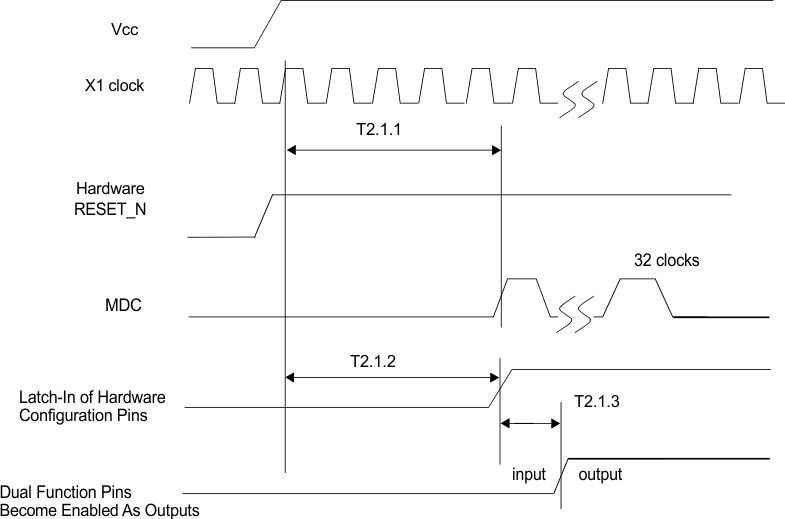 Figure 5-1 Power Up Timing
Figure 5-1 Power Up Timing
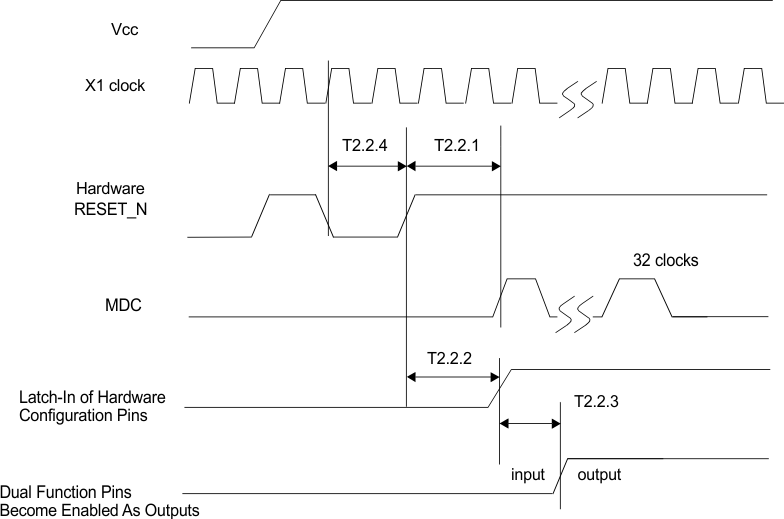 Figure 5-2 Reset Timing
Figure 5-2 Reset Timing
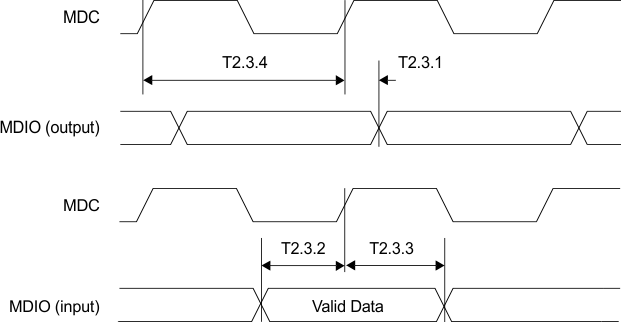 Figure 5-3 MII Serial Management Timing
Figure 5-3 MII Serial Management Timing
 Figure 5-4 100 Mb/s MII Transmit Timing
Figure 5-4 100 Mb/s MII Transmit Timing
 Figure 5-5 100 Mb/s MII Receive Timing
Figure 5-5 100 Mb/s MII Receive Timing
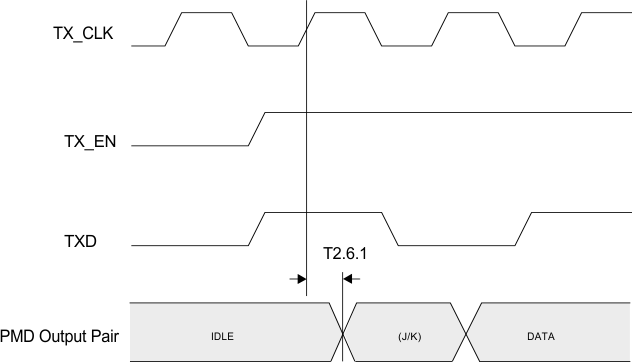 Figure 5-6 100BASE-TX Transmit Packet Latency Timing
Figure 5-6 100BASE-TX Transmit Packet Latency Timing
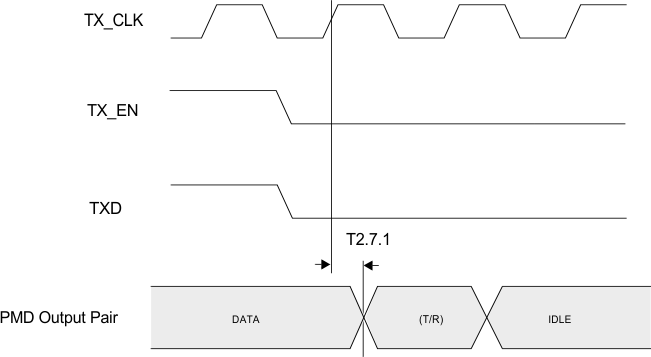 Figure 5-7 100BASE-TX Transmit Packet Deassertion Timing
Figure 5-7 100BASE-TX Transmit Packet Deassertion Timing
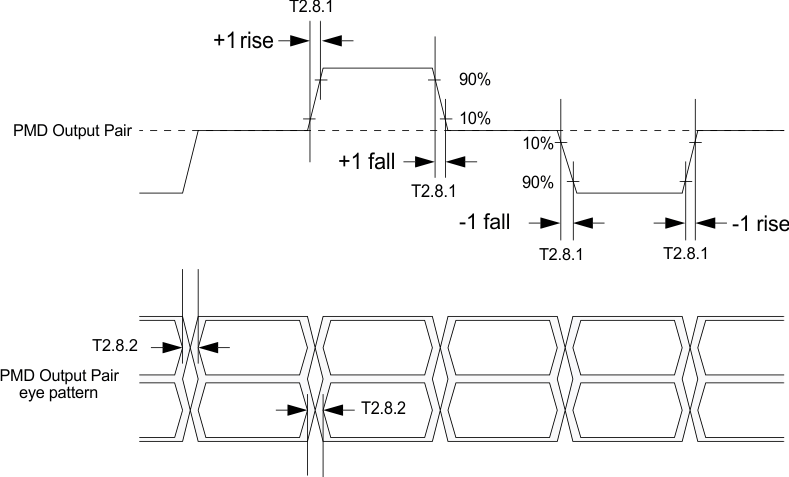 Figure 5-8 100BASE-TX Transmit Timing (tR/F and Jitter)
Figure 5-8 100BASE-TX Transmit Timing (tR/F and Jitter)
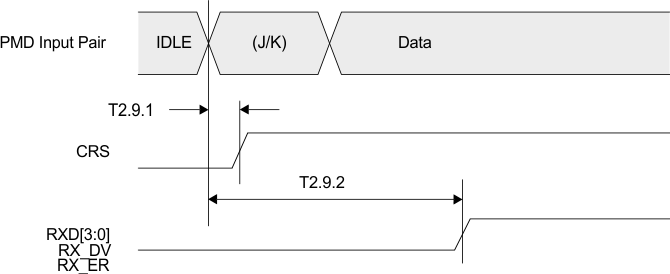 Figure 5-9 100BASE-TX Receive Packet Latency Timing
Figure 5-9 100BASE-TX Receive Packet Latency Timing
 Figure 5-10 100BASE-TX Receive Packet Deassertion Timing
Figure 5-10 100BASE-TX Receive Packet Deassertion Timing
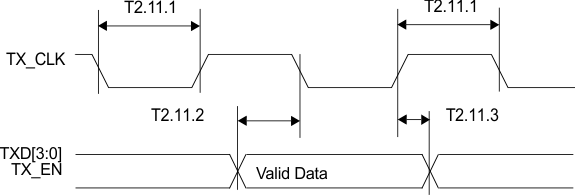 Figure 5-11 10 Mb/s MII Transmit Timing
Figure 5-11 10 Mb/s MII Transmit Timing
 Figure 5-12 10 Mb/s MII Receive Timing
Figure 5-12 10 Mb/s MII Receive Timing
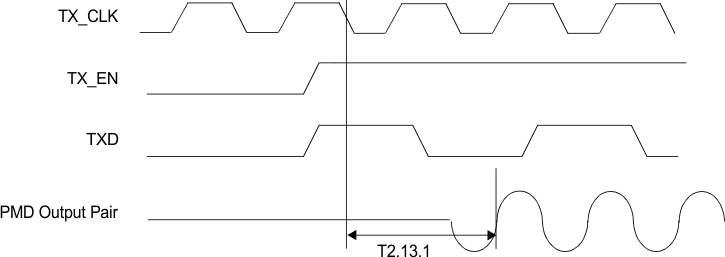 Figure 5-13 10BASE-T Transmit Timing (Start of Packet)
Figure 5-13 10BASE-T Transmit Timing (Start of Packet)
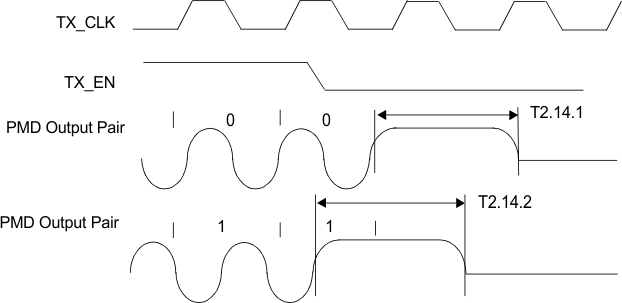 Figure 5-14 10BASE-T Transmit Timing (End of Packet)
Figure 5-14 10BASE-T Transmit Timing (End of Packet)
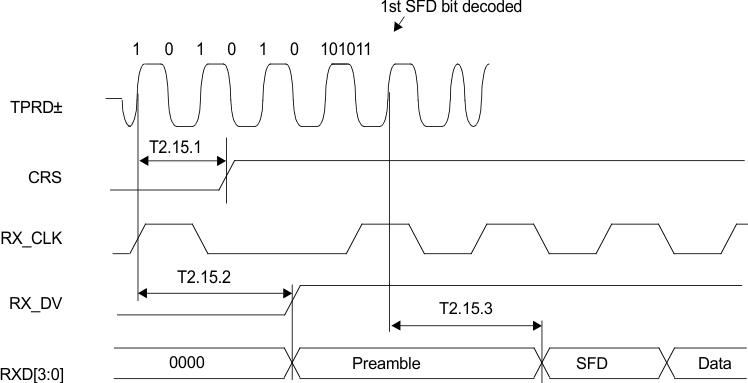 Figure 5-15 10BASE-T Receive Timing (Start of Packet)
Figure 5-15 10BASE-T Receive Timing (Start of Packet)
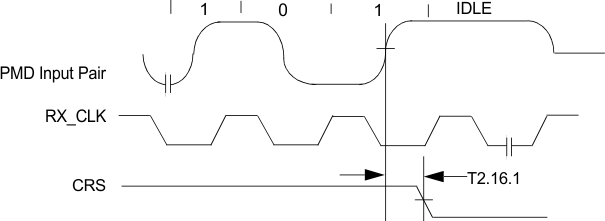 Figure 5-16 10BASE-T Receive Timing (End of Packet)
Figure 5-16 10BASE-T Receive Timing (End of Packet)
 Figure 5-17 10 Mb/s Heartbeat Timing
Figure 5-17 10 Mb/s Heartbeat Timing
 Figure 5-18 10 Mb/s Jabber Timing
Figure 5-18 10 Mb/s Jabber Timing
 Figure 5-19 10BASE-T Normal Link Pulse Timing
Figure 5-19 10BASE-T Normal Link Pulse Timing
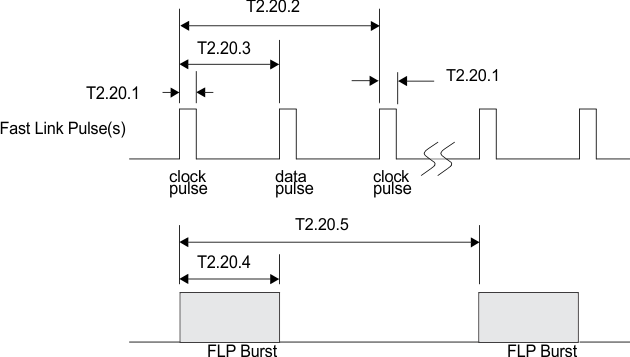 Figure 5-20 Auto-Negotiation Fast Link Pulse (FLP) Timing
Figure 5-20 Auto-Negotiation Fast Link Pulse (FLP) Timing
 Figure 5-21 100BASE-TX Signal Detect Timing
Figure 5-21 100BASE-TX Signal Detect Timing
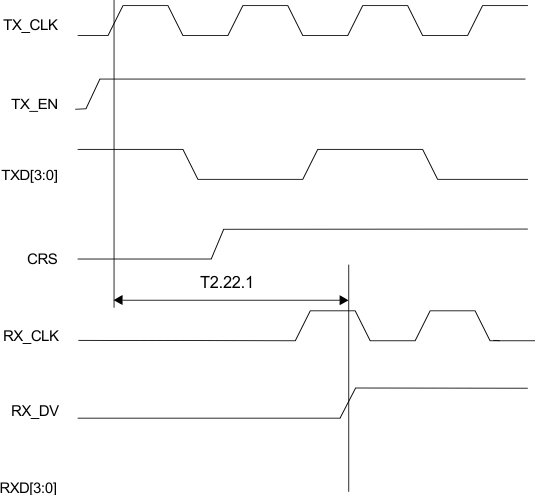 Figure 5-22 100 Mb/s Internal Loopback Timing
Figure 5-22 100 Mb/s Internal Loopback Timing
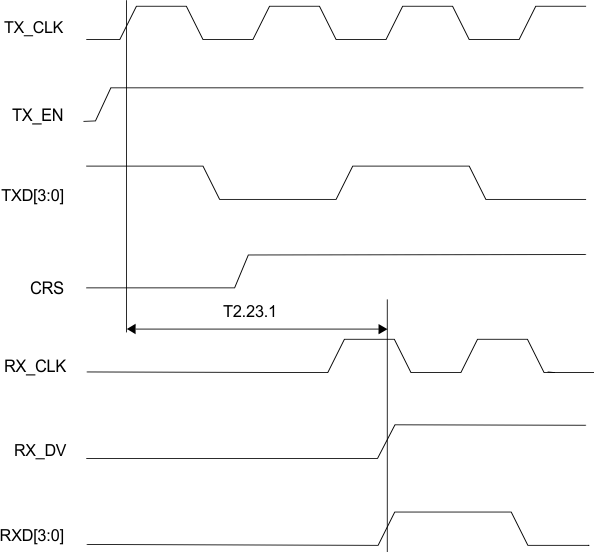 Figure 5-23 10 Mb/s Internal Loopback Timing
Figure 5-23 10 Mb/s Internal Loopback Timing
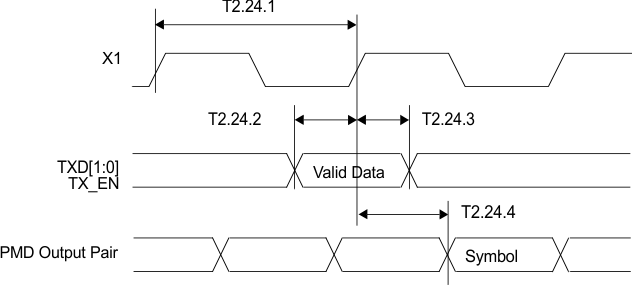 Figure 5-24 RMII Transmit Timing
Figure 5-24 RMII Transmit Timing
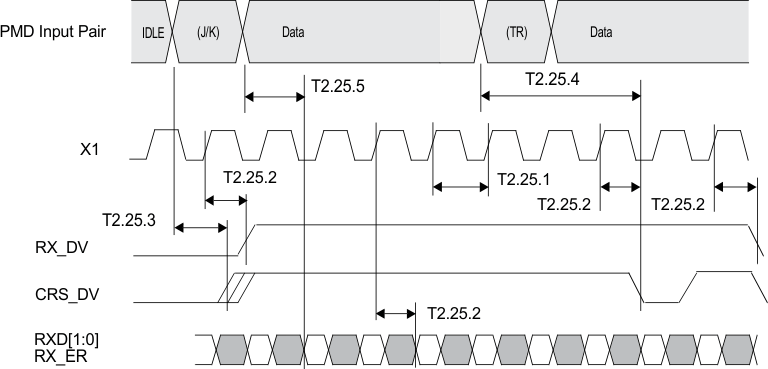 Figure 5-25 RMII Receive Timing
Figure 5-25 RMII Receive Timing
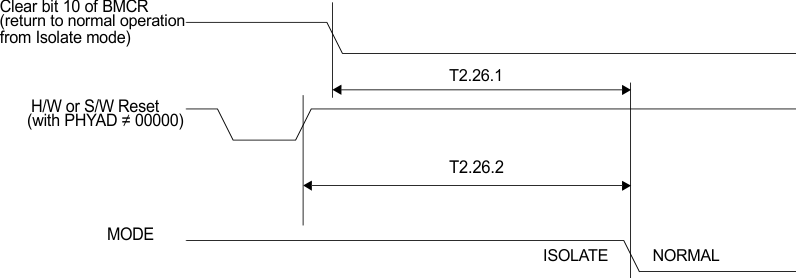 Figure 5-26 Isolation Timing
Figure 5-26 Isolation Timing
 Figure 5-27 100 Mb/s X1 to TX_CLK Timing
Figure 5-27 100 Mb/s X1 to TX_CLK Timing